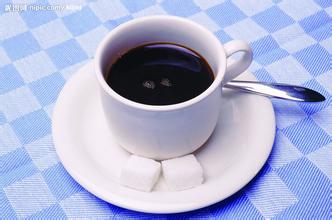Introduction to the characteristics of Indonesian Kopi Luwak Flavor Manor and Arabica Coffee Manor
Kopi Luwak is produced by the feces of Indonesian coconut cats (a kind of civet) as raw materials, so it is called "Kopi Luwak". This kind of animal mainly feeds on coffee beans. After completing fermentation in the coconut cat's stomach, it destroys protein, produces short peptides and more free amino acids, reduces the bitterness of coffee, and then excretes feces as the main raw material. Because coffee beans cannot be digested, they are excreted and Kopi Luwak is made after washing and baking. Coffee critic Chris Rubin said, "the aroma of the wine is so rich and strong, and the coffee is incredibly rich, almost like syrup." Its thickness and chocolate taste, and lingering on the tongue for a long time, the pure aftertaste is that there is a special animal in the Indonesian mountains: the civet, because it makes Indonesia produce almost the most expensive coffee in the world-civet coffee, also known as Kopi Luwak. This kind of cat likes to eat coffee berries, and hard coffee beans are eventually excreted because they are indigestible. During the period of passing through the digestive tract, the coffee beans are fermented to produce a unique and complex aroma. Many foodies like this kind of coffee with special aroma. Because the output is very small, the price of Sulawesi's old name Celebes is very high. The most common famous coffee is the Toraja Taraga coffee beans produced in the center of the island. Toraya is very similar to the first-class Sumatra, except that the texture is slightly less rich, acidity and brightness are also slightly higher, as for the famous wild mushroom flavor and meticulous herbal flavor of Indonesian coffee. Indonesian Sulawesi Sulawesi (Celebes) Kalossi Kalosi coffee beans still look a little bigger than Mantenin. In the early 1970s, Java cut down Arabica trees introduced by most Dutch people and planted Robbosa beans instead. Java coffee has since become greasy, plain, and has a strong smell of wheat and tea. Of the few remaining Arabica estates, Djampit is the most famous. These beans are similar to other Indonesian beans, but they are more sour and less textured. Robusta beans from Java have a unique smell and are often used as a recipe for espresso because they are rich in oil. Although the production of Arabica coffee beans in Java is very small, many coffee lovers like (Mandheling) and Ankola are the most textured coffee in the world, of which Mantenin is more famous, and Lindong Lindong Manning coffee bean is the most acclaimed. These beans are semi-washed, that is, they are dried and then washed off with hot water, which makes the beans have the charming earthy smell of dried beans while maintaining neat quality. Aged Sumatra (Aged Sumatra) is a specially treated bean. Raw beans have been stored in the place of origin for three to more than ten years before they are put on the market, which reduces its acidity, reduces its aroma, and makes its taste more round, with a thick texture similar to syrup, thick but not abundant, which can be said to be Pu'er tea in coffee. In the northwestern tip of Sumatra, there is also a kind of washed coffee called Gayo mountain, which is a group of variant trees. It is cleaner and fresher than Mandheling. It has a clear herbal flavor. The Mandheling from the mountains of Sumatra is world-famous and rich in texture. In contrast to the wine-like taste of Sumatra and East Africa, beans from Indonesia and New Guinea show a different flavor, with a sticky texture, sour taste buried in a complex taste, a dark smell of herbs or wild mushrooms, and a sweet finish that goes deep into the throat for three days. They can play the role of bass in the mix. Many people believe that in west-central Sumatra, near the Padang mountains, Mantenin is produced.

Important Notice :
前街咖啡 FrontStreet Coffee has moved to new addredd:
FrontStreet Coffee Address: 315,Donghua East Road,GuangZhou
Tel:020 38364473
- Prev

The Flavor and Taste characteristics of Indonesian Coffee Manor
Indonesia is located in southeastern Asia, crossing the equator, bordering Papua New Guinea, East Timor and Malaysia, and facing Thailand, Singapore, the Philippines, Australia and other countries. Indonesia crosses the equator (12S-7N), and more than 70 per cent of its territory is located in the southern hemisphere, so it is the largest country in the southern hemisphere of Asia (East Timor is also a southern hemisphere country). Longitude over 9
- Next

Introduction to Santa Barara Manor with rich and unique aroma of Honduran Coffee Manor
Medium or shallow acidity, giving the impression of obvious but not strong. Sometimes it has a beautiful floral or fruity aroma (generally speaking, beans produced in different regions and at different elevations have different performances). It is not at all associated with the unrest of the country. Bitterness and obvious sweetness. The overall taste of Honduran coffee is balanced, sour and bitter are not so strong, between the two
Related
- Does Rose Summer choose Blue, Green or Red? Detailed explanation of Rose Summer Coffee plots and Classification in Panamanian Jade Manor
- What is the difference between the origin, producing area, processing plant, cooperative and manor of coffee beans?
- How fine does the espresso powder fit? how to grind the espresso?
- Sca coffee roasting degree color card coffee roasting degree 8 roasting color values what do you mean?
- The practice of lattes: how to make lattes at home
- Introduction to Indonesian Fine Coffee beans-- Java Coffee producing area of Indonesian Arabica Coffee
- How much will the flavor of light and medium roasted rose summer be expressed? What baking level is rose summer suitable for?
- Introduction to the characteristics of washing, sun-drying or wet-planing coffee commonly used in Mantenin, Indonesia
- Price characteristics of Arabica Coffee Bean Starbucks introduction to Manning Coffee Bean Taste producing area Variety Manor
- What is the authentic Yega flavor? What are the flavor characteristics of the really excellent Yejasuffi coffee beans?

